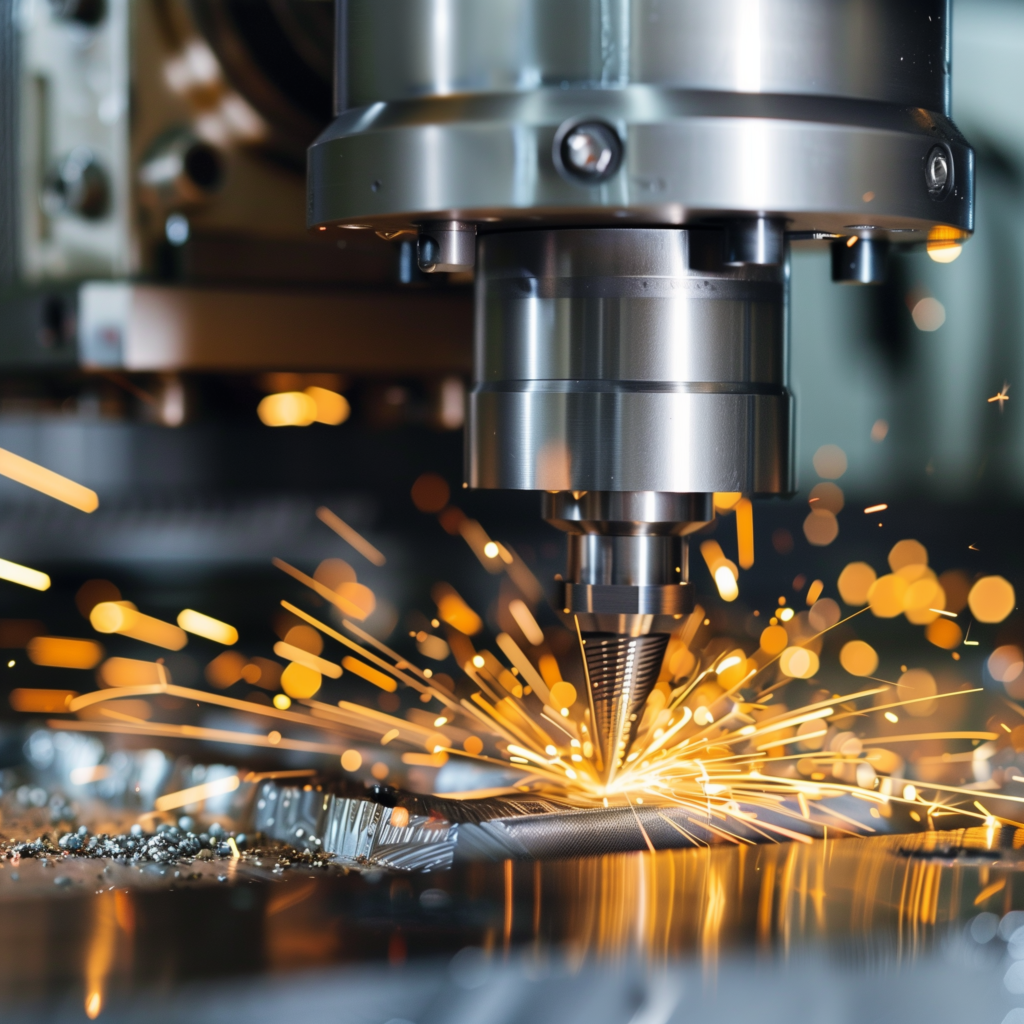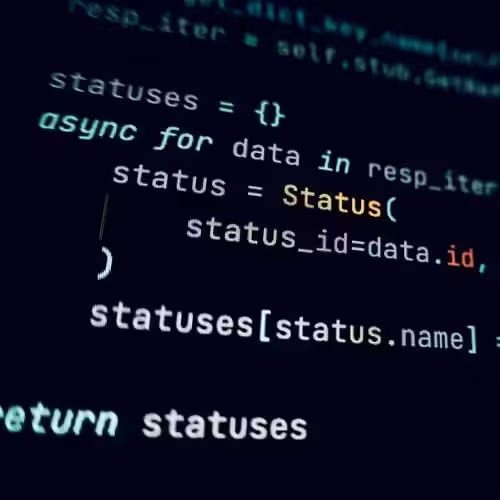CNC processing, also known as numerical control machining, refers to the use of CNC tools for manufacturing. Since CNC machining is controlled by a computer after programming, it has several advantages: stable processing quality, high precision, high repeatability, the ability to process complex shapes, and high efficiency. In actual processing, human factors and operational experience significantly impact the final quality. Let’s take a look at twelve valuable insights summarized by an experienced CNC machinist with ten years in the field.

How to Divide CNC Processing Operations?
The division of CNC machining operations can generally be done using the following methods:
1.Tool Concentration Division: This method divides operations based on the tools used. The same tool is used to complete all parts of the component that it can work on before moving to the second or third tool for other sections. This reduces tool change frequency, compresses idle time, and minimizes unnecessary positioning errors.
2.Division by Process Areas: For components with extensive CNC machining content, the machining sections can be divided based on structural characteristics, such as inner shapes, outer shapes, curved surfaces, or flat surfaces. Typically, flat and reference surfaces are processed first, followed by holes; simple geometric shapes are processed before complex ones; and areas with lower precision requirements are machined before those with higher precision demands.
3.Division by Rough and Finish Machining: For components prone to deformation during CNC processing, rough machining may lead to deformation requiring reshaping. Generally, rough and finish machining processes should be separated. In summary, when dividing processes, consider the part’s structure and manufacturability, the machine tool’s capabilities, the volume of CNC machining content, installation frequency, and the production organization of your unit. It’s recommended to determine whether to adopt a concentrated or dispersed process principle based on actual conditions, while ensuring it remains reasonable.
What Principles Should Guide the Arrangement of CNC Machining Sequence?
The arrangement of processing sequences should consider the part’s structure, the state of the raw material, and the requirements for positioning and clamping, with a focus on maintaining the rigidity of the workpiece. The sequence should generally follow these principles:
1.The previous CNC operation should not affect the positioning and clamping of the next operation, even if there are general machining operations interspersed.
2.Process internal shapes and cavities before external shapes.
3.Operations using the same positioning or clamping method or the same tool should ideally be connected to reduce the frequency of repetitive positioning, tool changes, and movement of clamps.
4.Multiple operations performed during the same setup should start with those that cause less disruption to the workpiece’s rigidity.
What Aspects Should Be Considered When Determining Workpiece Clamping Methods?
When determining positioning references and clamping schemes, consider the following three points:
1.Aim for consistency among design, processes, and programming calculations.
2.Minimize the number of clamping operations, striving to machine all surfaces in a single setup.
3.Avoid using manual adjustments that occupy machine time.
4.Ensure fixtures are unobstructed, and their positioning and clamping mechanisms do not interfere with tool movement (e.g., causing collisions). In such cases, consider using vices or bottom plate screws for clamping.
How to Determine a Reasonable Tool Setting Point? What is the Relationship Between the Workpiece Coordinate System and the Programming Coordinate System?
1.In CNC machining, the tool setting point can be positioned on the workpiece, but it must be on a reference point or a finished area. However, during the first operation, the tool setting point might get damaged, making it harder to identify for subsequent operations. To avoid this, it’s best to set the tool position in relation to a fixed dimensional reference during the initial operation, ensuring accurate retrieval later. This relative tool setting point is usually placed on the machine table or fixture. The selection principles include:
(1)Easy to locate.
(2)Convenient for programming.
(3)Minimal tool setting errors.
(4)Easy to inspect during processing.
2.In CNC machining, the origin of the workpiece coordinate system is set by the operator after securing the workpiece. This origin represents the distance between the workpiece and the machine’s zero point. Once established, the workpiece coordinate system typically remains fixed. It’s crucial for the workpiece coordinate system and the programming coordinate system to be aligned, ensuring consistency throughout the machining process.
How to Choose the Tool Path?
The tool path represents the trajectory and movement of the tool in relation to the workpiece during CNC machining. Choosing the appropriate machining path is essential, as it directly impacts the precision and surface quality of the part in CNC machining. When determining the tool path, consider:
1.Meeting the machining precision requirements.
2.Facilitating numerical calculations and reducing programming workload.
3.Seeking the shortest CNC machining route to minimize idle tool time and improve efficiency.
4.Minimizing the number of program segments.
5.Ensuring the roughness requirements of the machined part’s surface; the final contour should be arranged for continuous processing.
6.Carefully consider the tool’s entry and exit routes to minimize leaving tool marks due to sudden cutting force changes, and avoid vertical entry into the contour surface to prevent damage.
How to Monitor and Adjust During CNC Machining?
Once the workpiece is secured and the CNC machining program is debugged, the operation moves into the automatic machining stage. During this phase, the operator must monitor the cutting process closely to avoid any irregularities that could affect the machining quality or lead to potential hazards. Monitoring the cutting process primarily involves:
1.During CNC machining, the focus in rough cutting is on rapidly removing excess material from the workpiece. The machine tool follows a predefined path, cutting according to preset parameters. Operators must monitor variations in cutting load throughout the automated process and adjust the parameters as needed, based on the tool’s load capacity, to optimize the machine’s efficiency.
2.During CNC machining, it’s important to monitor the cutting sound throughout the process. At first, the sound should be steady, continuous, and sharp, signaling that the machine is operating smoothly. However, if problems develop, such as hard spots in the workpiece or tool wear, the sound will change, and vibrations may occur. In such cases, it’s necessary to adjust the cutting parameters, and if the issue persists, pause the CNC machine for inspection.
3.Monitoring the finishing process in CNC machining emphasizes maintaining precise dimensions and achieving high-quality surface finishes on the workpiece. Given the high cutting speeds and feed rates often used, it’s crucial to closely monitor the effects of chip buildup on the surface.For cavity machining, be mindful of overcutting at corners. Solutions include adjusting the coolant spray position and monitoring surface quality. If quality variations occur, adjust cutting parameters or inspect the original programming for reasonableness. Note that when stopping for inspection, ensure the tool is out of cutting state to avoid marks on the workpiece.
4.Tool monitoring is essential for maintaining quality in CNC machining. During automatic cutting processes, tool wear and damage can be evaluated through sound monitoring, timing controls, and surface inspections. Promptly addressing any tool issues is crucial to prevent quality defects resulting from unresolved tool conditions.
How to Reasonably Choose Cutting Tools? What Are the Main Factors in Cutting Parameters? What Types of Tool Materials Are There? How to Determine Tool Speed, Cutting Speed, and Cutting Width?
1.For face milling, choose unsharpened carbide end mills or face mills. During milling, aim for a two-pass approach, where the first pass uses an end mill for roughing along the workpiece surface continuously. The recommended pass width is 60% to 75% of the tool diameter.
2.Face mills with carbide inserts are primarily used for machining bosses, grooves, and box edges.
3.Ball end mills and round-nose mills are commonly used for machining curved surfaces and variable-angle profiles, with ball end mills suitable for semi-finishing and finishing.
What Is the Purpose of a Machining Program Sheet? What Should It Include?
1.A machining program sheet is one part of the CNC machining process design and serves as a guideline for operators, detailing the program, clamping and positioning methods, tools used, and relevant considerations.
2.The program sheet should include: drawing and programming file names, workpiece name, clamping sketch, program name, tools used in each program, maximum cutting depths, processing nature (e.g., rough or finish machining), and theoretical machining time.
What Preparations Should Be Made Before CNC Programming?
After determining the machining process, the following should be understood before programming:
1.Workpiece clamping methods.
2.The size of the raw workpiece to determine machining scope or the need for multiple setups.
3.The material of the workpiece to select appropriate tools.
4.Available tools in stock to avoid program modifications due to unavailability. If a specific tool is necessary, it should be prepared in advance.
What Principles Should Guide the Setting of Safety Heights in Programming?
The safety height should generally be set above the highest point of the workpiece. Alternatively, setting the programming zero at the highest point can maximize the avoidance of tool collision risks.
Why Is Post-Processing Required After Tool Paths Are Generated?
Post-processing is necessary because different machines recognize different address codes and NC program formats. Selecting the correct post-processing format for the specific machine ensures that the generated program can be executed.
What Is DNC Communication?
Program delivery methods can be divided into CNC and DNC. CNC refers to programs being delivered to the machine’s memory through media (like floppy disks, tape readers, or communication lines) for storage and processing. Due to storage limitations, when programs are large, DNC is used, where the machine directly reads the program from the control computer (i.e., processing while receiving), bypassing memory capacity restrictions.
1.Cutting parameters consist of three main factors: cutting depth, spindle speed, and feed rate. The general principle for selecting cutting parameters is to minimize cutting depth while maximizing feed speed.
2.Tools can generally be categorized based on material: ordinary high-speed steel tools, coated.
Here is today’s article. If you have any further questions, feel free to click here.


